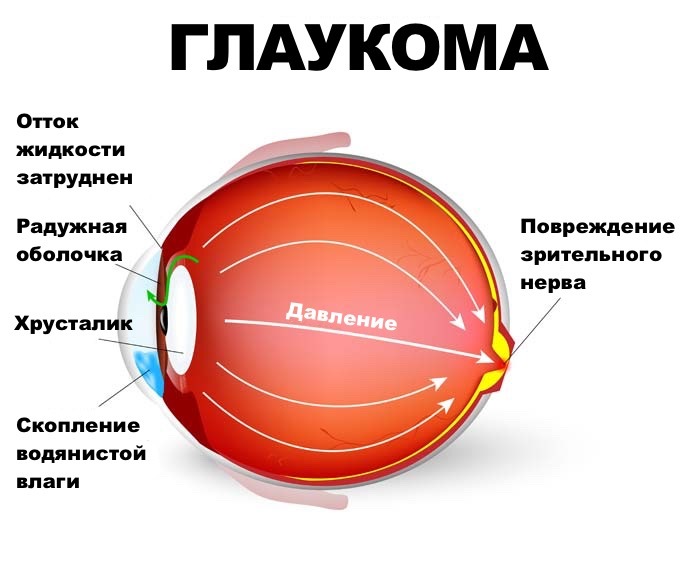
Duotra is a combined medical product intended for topical application in medical practice.
Its administration contributes to the drop in intraocular pressure, which happens due to activation of the separation of watery liquid and suppression of its formation.
The effect of the drug becomes noticeable after two hours after the administration, and its peak reaches its effect after twelve hours.
After a one-time application, the action of Duotrava lasts for a day.
- 1. Instructions for using
- 2. Side effects of
- 3. Storage terms and conditions
- 4. Price
- 5. Analogues
- 6. Reviews
- 7. Conclusion
- 8. Useful video
Instruction for use
Indications for use
Duotra is recommended for use in suppressing pressure in the eyes with intraocular hypertension and open-angle glaucoma.
If the glaucoma is not treated and the pressure is lowered, the optic nerve will gradually degrade:

Form,
| Composition | Formulated as eye drops, which are a sterile liquid that does not have a color. They are sold in a propylene bottle with a 2.5 ml dropper, which, together with the instruction, is placed in a box of cardboard |
| Active substances per 1 ml of solution |
|
| Auxiliary components per 1 ml of solution |
|
Method of application

The drug is used topically. For adults, they appoint one drop to the bag of the conjunctiva of the desired eye once a day - in the morning or before bedtime.
In order to reduce the likelihood of side effects, it is necessary after the injection of drops to press a finger near the inner corner of the eye for a couple of minutes.
If the instillation was missed, it is necessary to continue the course of treatment with a new dose, but you can not increase the dosage of drops.
Interaction with other
drugs To date, Duotra has not yet been studied in the context of interaction with other medications.
It is known that if applied simultaneously with guanethidine, arrhythmia drugs, beta adrenoblockers, calcium channel blockers, parasympatomimetics and cardiac glycosides, there is a risk of intensifying the hypotensive effect of these drops and the occurrence of a bradycardia.
Duotra can be used in parallel with other eye drops, adhering to a five-minute interval between their administrations. During treatment, Dourotrave should avoid drinking alcohol.
Side effects of
When treating Duotrave, local and systemic side effects may occur. Local effects should be considered:
- Hyperemia and eye irritation.
- Edema of the conjunctiva.
- Keratitis of point type.
- Photophobia.
- Painful manifestations and itching.
- Corneal damage.
- Drop in visual sharpness.
- Uncomfortable sensations.
- Irit.
- Hypheme.
- Drying of the mucosa.
- Astenopia.
- Blurred vision.
- Diplomacy.
- Corneal pigmentation.
- Allergic conjunctivitis.
- Intensified lacrimation.
- Enhanced eyelash growth.
- Dermatitis and irritation of the eyelids.
- Peeling of the skin of the eyelids and crusting.
- Blepharitis.
Systemic adverse reactions can be called:
- feeling of anxiety;
- pain and twisting of the head;
- fluctuations in blood pressure;
- bronchospasm;
- bradycardia;
- tenderness in the joints;
- hives;
- heart rate irregularities;
- syncope;
- paresthesia;
- shortness of breath;
- Persecution in the larynx;
- tenderness in the chest;
- increased thirst;
- cough;
- alopecia;
- change in color of urine;
- dyspepsia;
- rapid fatigue;
- hair growth enhancement.
Contraindications
The above-described drops are not allowed to be used in such circumstances:

- Excessive sensitivity to their constituents and to beta-blockers.
- Bronchial asthma, including in the past.
- Difficult course of an allergic rhinitis.
- Chronic obstructive pulmonary disease.
- Atrioventricular blockade of II-III level.
- Shock of cardiogenic nature.
- Superreactivity of the bronchi.
- Corneal dystrophy.
- Chronic heart failure.
- To the people before the war.
- Pregnant and lactating women.
Carefully apply this medication to the following patient categories:
- Suffering from occlusive, neovascular, pigmented, narrow-angle and congenital glaucoma.
- To persons with open-angle glaucoma with pseudo-aphasia.
- People with pseudo-reflexive glaucoma.
- Suffering inflammatory ailments of the visual organs.
- Persons at risk of iritis, uveitis, cystoid macular edema.
- Persons with aphakia or false aphakia with destruction of the posterior lens capsule.
Pregnancy
The above described ophthalmic drops are not allowed for women who are expecting a baby.
Terms and storage terms
Duotra must be stored at a temperature of no more than 25 degrees Celsius in a place inaccessible to children. The shelf life of these drops is three years, but after the first application they should be used within four weeks.
Price
Average price in Russia
In pharmacies that are located in Russian cities, the average cost of DUOTRA drops ranges from 900 rubles.
Average price in Ukraine
In drugstores located on the territory of Ukraine, the drops of Duotorav can be purchased for approximately 300 UAH.
Analogs
The preparation described above has some analogs, which include:
- Zerit;
- Indomethacin;
- Intal;
- Intrazoline;
- Insuman;
- Iphietsef;
- Floxal;
- Stillavit;
- Theosis;
- Zimar;
- Okumol.
Reviews

On the drops of Dourot you can find both positive and negative reviews. The main advantage of this drug is that it needs to be administered only once a day.
Some patients note Duotrave's effectiveness in reducing intraocular pressure. Among the negative qualities of Duotrava, it is possible to allocate a sufficiently high cost and unpleasant side reactions.
If you want to read reviews of patients who were treated with these drops, you will find them at the end of the article.
Conclusion
- Duotra is a medical product that is used in ophthalmology to reduce pressure inside the eyes.
- It is available in the form of drops.
- Children, as well as pregnant and lactating women, can not use Duotra.
- Use of this medication may cause some side effects.
- If necessary, Duotra can be replaced with a similar preparation.
Useful video
This video might be useful for you:

